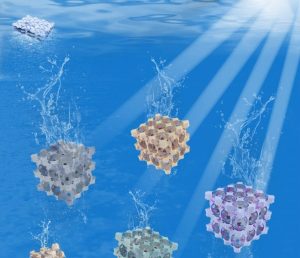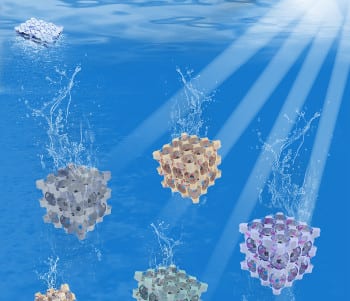 Macroporous hydrogels prepared by colloidal crystal templating have attracted much attention in recent years due to their unique structural features. Envisioned applications range from responsive materials for multiplex detection, and scaffolds for tissue engineering, to absorbents for CO2 capture. Colloidal crystal templating is a facile and effective method to construct 3D ordered macroporous (3DOM) structures with interconnected pores and well controlled pore size. However, due to the difficulty in morphological characterizations the porous structures of 3DOM hydrogels could in many cases not be determined in detail, which has limited further systematic studies in the field.
Macroporous hydrogels prepared by colloidal crystal templating have attracted much attention in recent years due to their unique structural features. Envisioned applications range from responsive materials for multiplex detection, and scaffolds for tissue engineering, to absorbents for CO2 capture. Colloidal crystal templating is a facile and effective method to construct 3D ordered macroporous (3DOM) structures with interconnected pores and well controlled pore size. However, due to the difficulty in morphological characterizations the porous structures of 3DOM hydrogels could in many cases not be determined in detail, which has limited further systematic studies in the field.
Through the use of two novel approaches for the investigation of 3DOM, Kris Matyjaszewski and co-workers (Carnegie Mellon University, Pittsburgh, USA) could now demonstrate for the first time the intrinsic shape memory properties of 3DOM hydrogels. The first method is electron microscopy imaging of the inverse replicas of 3DOM hydrogels and the other is noninvasive and nondestructive nanoscale resolution X-ray microscopy (nano-XRM) imaging of the hydrated hydrogels.
3DOM hydrogels were prepared by either conventional FRP or ATRP of hydrophilic functional monomers and crosslinkers in the presence of latex colloidal crystals as the template. Further modifications of functional 3DOM hydrogels with organic moieties, polymers, bio(macro)molecules, and inorganic particles generates materials with new properties (e.g., hydrophobicity, fluorescence, conductivity, and stimuli-responsivity) into the structured 3DOM hydrogels and result in novel composites for (bio)catalysis and separation applications.
This work suggests that functional 3DOM hydrogels represent a versatile platform for a wide range of applications and there are even more multifunctional materials based on 3DOM gels to be explored. Read the whole research article now in the latest issue of Advanced Science.
Advanced Science is a new journal from the team behind Advanced Materials, Advanced Functional Materials, and Small. The journal is fully Open Access and is free to read now at www.advancedscience.com.

















